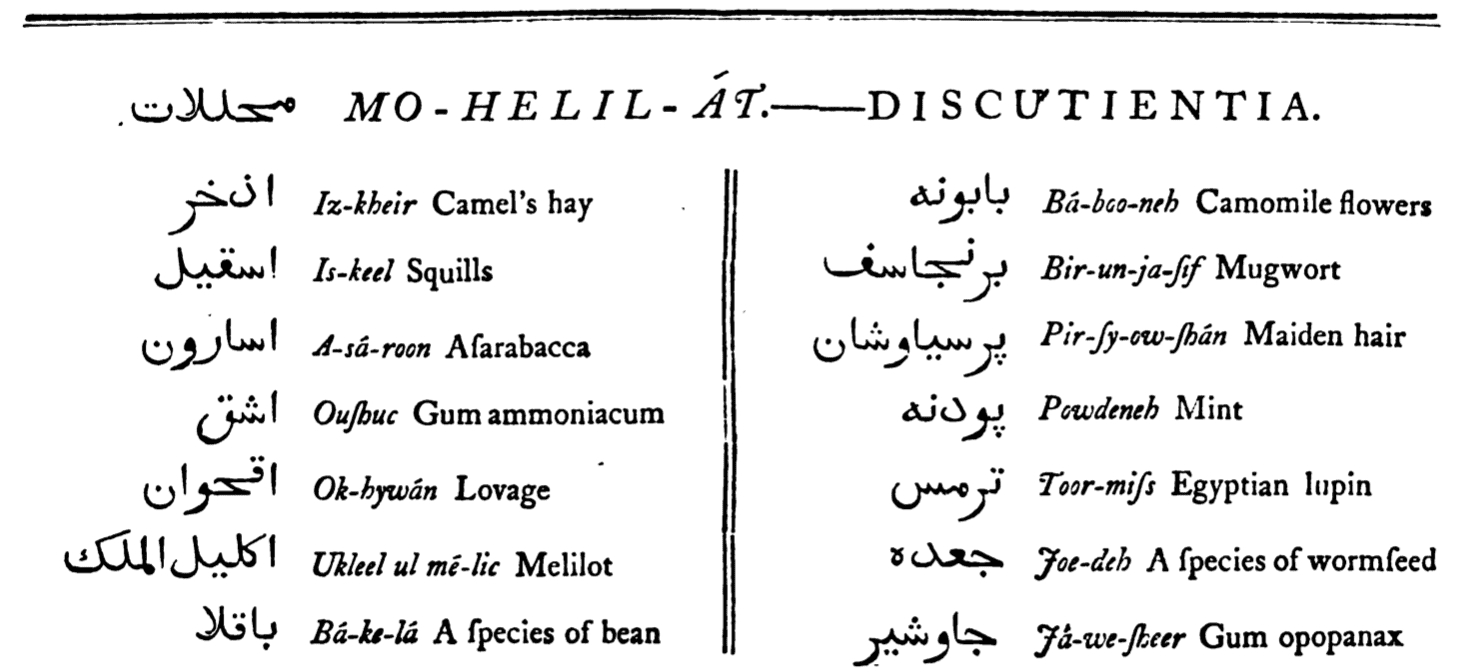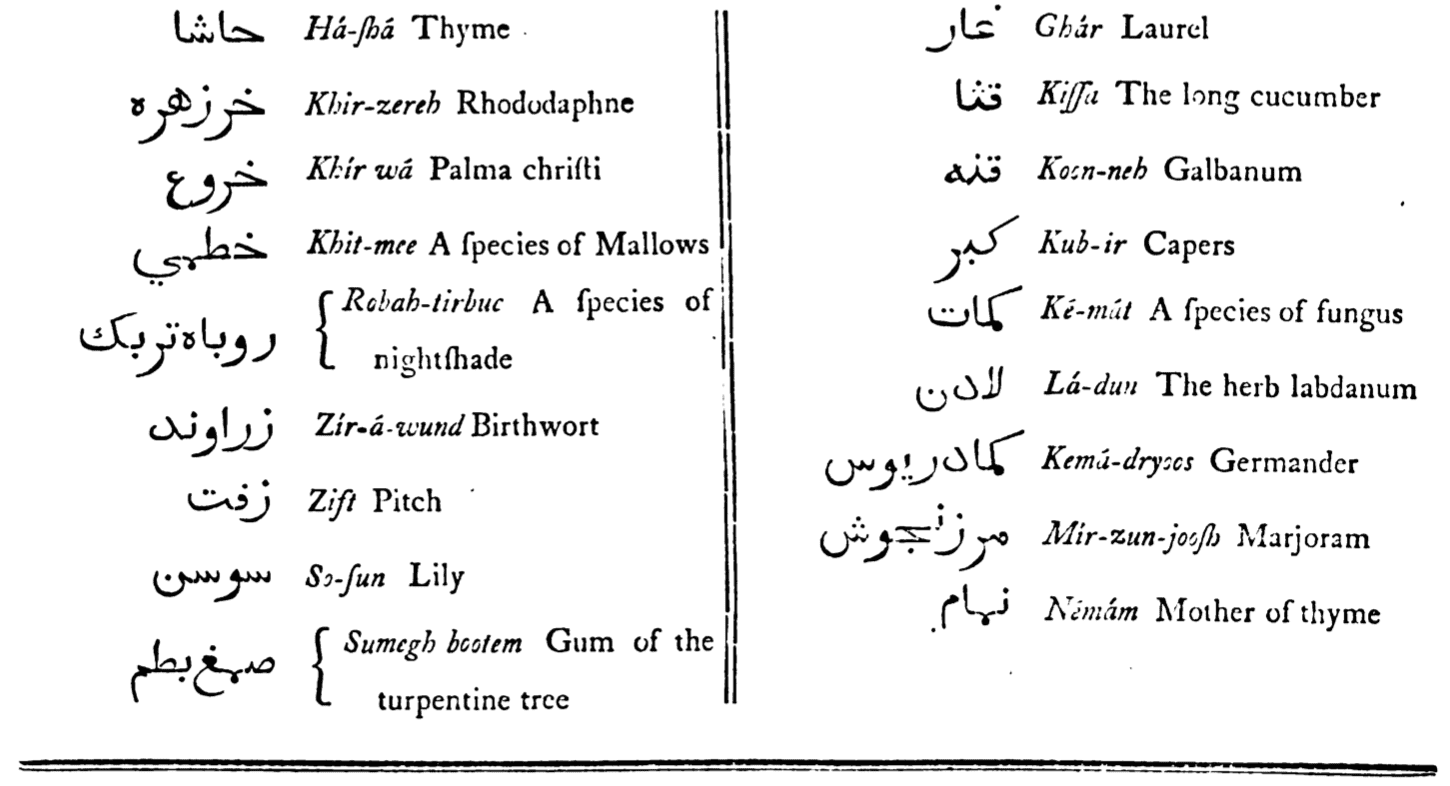2K. Resolvent
Resolvitive, Diaphoretica, Discutientia, Discussives, Dissolvents
 Materia Medica in Arabic & Persian, Shirazy, 1793
Materia Medica in Arabic & Persian, Shirazy, 1793Resolvent or Discussing medicines are those that break up, dissolve and disperse thick matter. They resolve Inflammations and Swellings, and are also used for Tumors. The Greeks called them Diaphoretica as they help the matter transpire through the skin (‘insensible transpiration’). Taken internally in full doses, they tend to promote Sweat.
They may be used with opening medicines and Blood movers for chronic obstructions including those of the Qi, Blood, Humors or Fluids, and are useful in Tumors. However, when used for Tumors, Emollients should be added to avoid excessive drying.
This class work in several ways, and many of these medicines have multiple effects to achieve this result. Some cut through Phlegm and Damp, some promote Sweat, others move Qi and Blood.
|
Bryony Castor prepared Arum root prepared |
Agaric Scammony root |
Cyclamen Birthwort |
|
Nitre Lime Alabaster, Gypsum Burnt Lead |
Salt Ceruse Azurite Sulphur |
Sal Ammoniac Orpiment Fullers Earth Shilajit |
Western Classification
